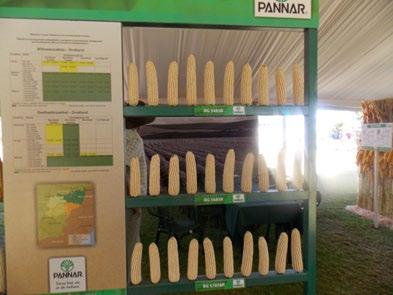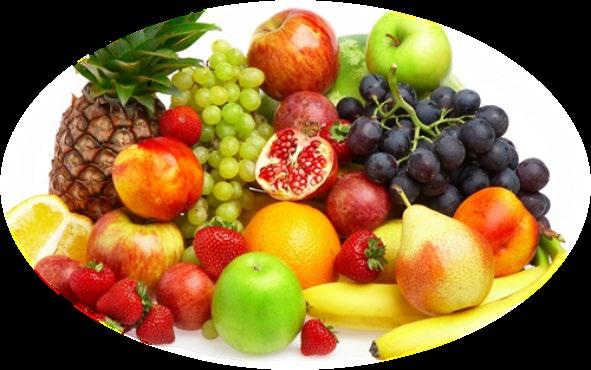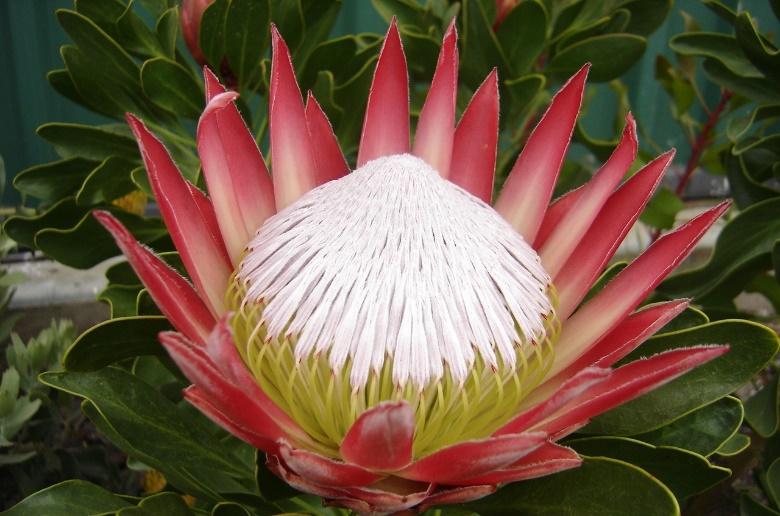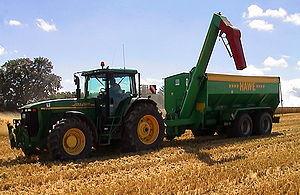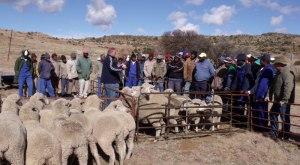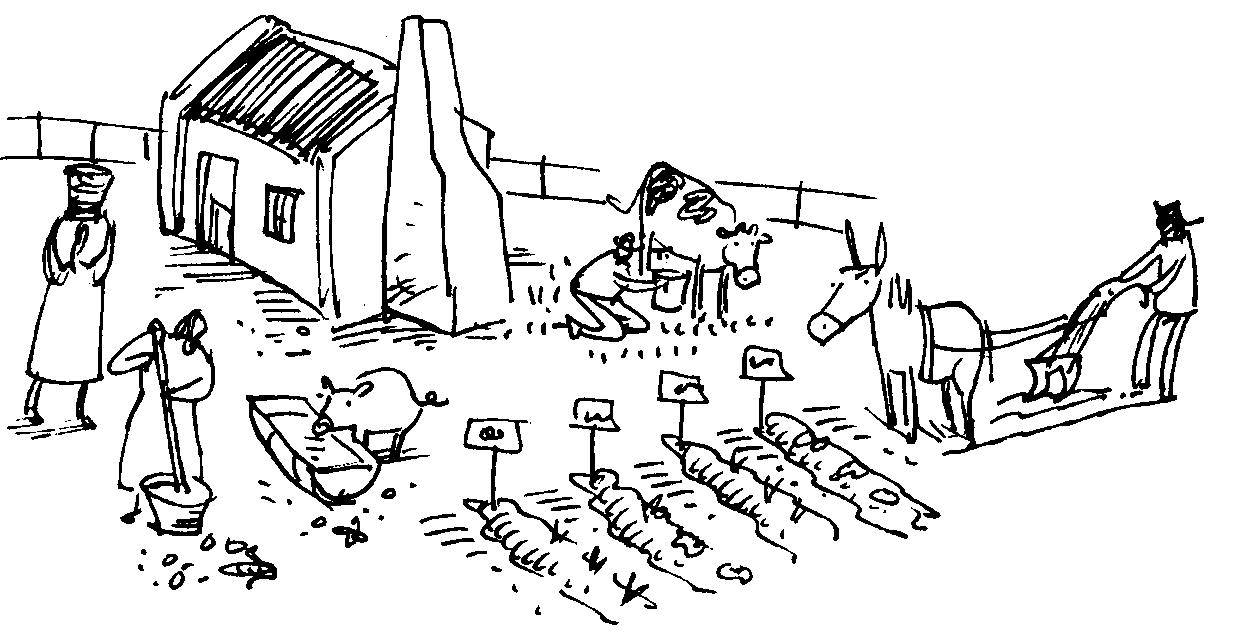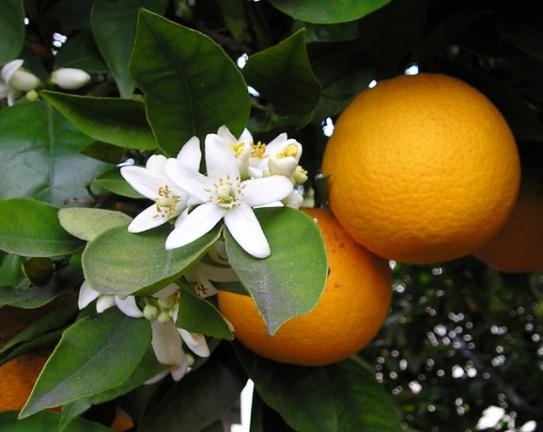Grade 10 • Study Guide Agricultural Management Practices
Owned and published by Optimi, a division of Optimi Central Services (Pty) Ltd.
7 Impala Avenue, Doringkloof, Centurion, 0157 info@optimi.co.za www.optimi.co.za
© Optimi
Apart from any fair dealing for the purpose of research, criticism or review as permitted in terms of the Copyright Act, no part of this publication may be reproduced, distributed, or transmitted in any form or by any means, electronic or mechanical, including photocopying, recording, or any information storage and retrieval system without prior written permission from the publisher.
The publisher has no responsibility for the persistence or accuracy of URLs for external or third-party internet websites referred to in this publication, and does not guarantee that any content on such websites is, or will remain, accurate or appropriate.
There are instances where we have been unable to trace or contact the copyright holder. If notified, the publisher will be pleased to rectify any errors or omissions at the earliest opportunity.
Reg. No.: 2011/011959/07
Agricultural Management Practices
Study guide
Grade 10
CAPS aligned
JC Zandberg
LESSON ELEMENTS
LEARNING AIMS
What the learner should know at the end of the lesson. Taken from CAPS.
IMPORTANT TERMINOLOGY
New terminology to extend understanding of the subject as part of the lesson.
Sample
DEFINE
Definitions of concepts to help the learner understand the content.
IMPORTANT
A summary or explanation of key concepts explained in the lesson.
TIPS
Information in addition to the content to guide the learner through the learning process.
FOR THE CURIOUS
Encouragement for the learner to do in-depth research about the content on his/her own.
ACTIVITY
Formative assessment to test the learner’s progress and knowledge of the lesson completed.
EXERCISE
Formative assessment to test the learner’s progress and knowledge of the unit completed.
CORE CONTENT
Reinforcement of core of content; in-depth explanation of a specific section of the lesson.
STUDY/REVISION
Demarcation or summary of work to be revised in preparation for tests and examinations.
* All lesson elements are not necessarily used in this guide.
ADDITIONAL SOURCES
Recommended books are used supplementary to this study guide. It is always good to refer to other textbooks. For example:
• Agricultural magazines e.g Farmer’s Weekly
• Agri Farmer
INTRODUCTION
Agricultural Management Practices (AMP) is the study and application of economic and management principles that are used in the production, transformation and marketing of food and other agricultural products. These principles are used to add value to high quality agricultural products so that these products have economic, aesthetic, social and cultural value.
AMP gains knowledge and skills from disciplines such as crop sciences, animal sciences, economic and management sciences, engineering and information and communication technology.
AMP should be approached by keeping the following learning outcomes in mind:
Knowledge and understanding of the interrelationships between AMP, society and the environment
The focus of AMP is on the development in transformative legislation, poverty and the global environment. This learning outcome shows you how to understand AMP in order to improve the quality of life of individuals and communities.
Management practice process
Investigate and study the management processes and skills by underpinning AMP
Knowledge and understanding of management practices in agriculture
The focus of this learning outcome is to gain knowledge, acquire a broader understanding of how AMP relates to your everyday life and to make informed decisions to incorporate all relevant practices, systems and technologies to manage a sustainable agricultural environment.
Application of knowledge and skills in Agriculture
AMP addresses the various skills needed to access, process and use information to face the challenges of agriculture. It also involves the knowledge and skills to handle basic and relevant agricultural machinery and equipment so as to solve agriculture-related problems.
1 CROP PRODUCTION
2 ANIMAL PRODUCTION
3 ANIMAL MANAGEMENT ASPECTS
4 MANAGEMENT PRINCIPLES
1.1 Introduction
1.2 Farming systems
YEAR PLANNING
1.3 Different enterprises
1.4 Soil and water management in crop production: Basic requirements
1.5 Soil and water management in crop production: Soil cultivation methods
1.6 Soil and water management in animal production
1.7 Water sources
1.8 Crop management aspects
1.9 Crop management aspects: Monoculture and crop rotation
1.10 Crop management aspects: Recordkeeping
2.1 Animal production practices in South Africa
2.2 Main production areas in South Africa
2.3 General classification of farm animals
2.4 Cattle breeds
2.5 Sheep breeds
2.6 Pig breeds
2.7 Poultry breeds
3.1 Handling of farm animals
3.2 Caring for farm animals
3.3 Housing of farm animals
3.4 After-care of farm animals
3.5 Identification methods
3.6 Basic concepts of animal feeding
3.7 Diseases and parasites
3.8 Recordkeeping
3.9 Basic principles of management programmes
4.1 Definition of management
4.2 Management principles
4.3 Different types of natural resource management
4.4 Soil potential and management: Soil improvement
4.5 Soil potential and management: Conservation practices
4.6 Waste management: Different types of waste
UNIT 1: Crop production
Lesson 1.1: Introduction
LEARNING OBJECTIVES:
After completing this lesson, you should have knowledge of: Four crop production enterprises:
• General crop production practices and factors
• Overview of the economic importance of crops
• General overview and comparison of crop production in South Africa:
o Potential role and importance of the industry
o Main production areas for different crops
• Requirements for successful crop production, with reference to:
o land (soil, water, climate and other natural resources)
o labour
o capital
o management
INTRODUCTION
Crop production is a complex business that requires many skills (such as biology, agronomy, mechanics and marketing) and covers a variety of operations.
Crops are plants that are grown for food or other uses. We distinguish between four basic categories:
• Horticultural crops
• Field crops
• Fodder crops
• Forest crops
Nampo 2014
IMPORTANT TERMINOLOGY
Agri: That which relates to agriculture.
Gross Domestic Product (GDP): The total value of goods produced and services rendered in one year.
Crops: Plants grown for food or other uses, especially cereals.
Volume of agricultural production: The amount of products produced at any given time.
Horticultural crops
Horticultural crops are the branch of agriculture that deals with the art, science, technology, and business of plant cultivation. It includes the cultivation of medicinal plants, fruits, vegetables, nuts, seeds, herbs, sprouts, mushrooms, algae, flowers, seaweeds and non-food crops such as grass and ornamental trees and plants. It also includes plant conservation, landscape restoration, landscape and garden design, construction, and maintenance
Field crops
Field crops (other than fruits or vegetables) are grown for agricultural purposes; cotton, hay, and grain are examples of field crops.
Fodder crops
Fodder crops are primarily cultivated for animal feed. Natural grasslands and pastures are included, whether they are cultivated or not. Fodder crops may be classified as either temporary or permanent crops. They are cultivated and harvested like any other crop.
Forest crops
Forest farming is the cultivation of high-value specialty crops under a forest canopy that is intentionally modified or maintained to provide shade and habitat that enhance growth and production levels. It combines agricultural and forestry technologies to create more diverse, productive, profitable, healthy and sustainable land-use systems.
GENERAL CROP PRODUCTION PRACTICES AND FACTORS
Soil and climate conditions must be considered and good management practices must be applied to ensure an optimal harvest
Factors for successful crop production:
• Take the climate of the area into account
• Choose crops that are suitable for the specific climatic and soil conditions.
• Plant the crops at the right time of the year.
• Select and plant good quality seed that is disease-free.
• Choose the correct fertiliser to provide the specific nutritional needs of the crop to grow.
• Consider the water needs of the plant.
• Apply integrated pest management.
HORTICULTURAL CROPS
FRUIT
Fruits are generally classified into three groups:
• Tropical fruits such as bananas, papayas, mangos and pineapples.
• Subtropical fruit such as avocados, citrus fruits, granadillas, litchis and nuts.
• Deciduous fruits such as grapes, apples, pears and stone fruit such as peaches and cherries.
www.zastavki.com/eng/Food/Berries_and_fruits_and_nuts/wallpaper-33749.htm
Basic climate and soil requirements for fruit: Type of crop Climatic requirements Soil requirements
• Grows well in temperatures ranging between 13 and 38 °C.
Tropical fruits
Sample
• Has a relative humidity of 75 –85%.
• High temperatures cause sun scorching.
• Strong winds damage crops.
• Needs a climate without frost and with little wind.
• Prefers deep, rich, loamy soils, with a pH between 6 to 7,5.
• Soil should be well drained with adequate moisture.
• Must be rich in nitrogen with adequate phosphorus and plenty of potash.
• Needs well-aerated, well-drained soil that is deeper than 1 m.
Subtropical fruits
Deciduous fruits
• The optimum growth temperature is between 20 and 24 °C
• Annual rainfall should exceed 1 000 mm.
• Requires hot, dry conditions.
• Grows in moderate climate areas.
• Cool, wet winters with little frost
• Warm, dry summers
• Requires a clay content of 20 –40%; if less, the soil will have a limited water-retention capacity.
• Requires well-aerated soils with good organic matter
• Requires well-drained soil with depth of 1 m.
• The ideal clay-content should be between 10 to 35%
www.ppecb.com/index.php/production-map.html
VEGETABLES
Vegetables are divided into five groups, based on the plant organ in which the food is stored. We distinguish between:
• root vegetables e.g. carrots and beetroot
• leaf vegetables e.g. spinach and cabbage
• stem vegetables e.g. potatoes
• fruit vegetables e.g. tomatoes
• flower vegetables e.g. cauliflower totalfruitandvegetable.com
Basic climate and soil requirements for vegetables:
Type of crop
Root vegetables
Leaf vegetables
Stem vegetables
Fruit vegetables
Flower vegetables
Climatic requirements
• Winter crops
• Early harvests require full sunshine
• Main crops require protection from the sun.
• Requires a moderate climate.
• Cabbage is extremely hardy.
• Germinate readily at 18 – 28 °C
• High soil temperatures reduce and impair germination.
• The optimum soil temperature to initiate tuber growth is between 16 and 19 °C.
• Cool night temperatures are important for the accumulation of carbohydrates in the tubers.
• Yields are higher when average daytime temperatures are about 21 °C
• Requires a fairly hot, dry climate.
• Needs plenty of sunshine.
• No excessive shading.
• Does not survive frost.
• Requires a cool, moist climate.
• Temperatures between 10 and 21 °C are needed for good germination.
• High temperatures result in yellowish leaves.
FLOWER CROPS
Soil requirements
• Deep, light, sandy loam is ideal.
• Does not tolerate dry conditions.
• Does not grow well in waterlogged or badly drained soil.
• Requires fertile, sandy loam with high organic matter levels
• The soil’s pH should range between 6,4 and 6,8.
• Soil that is too acidic or too alkaline will kill plants.
• Requires a light, sandy soil.
• Soil should be tilled thoroughly
• Use a moderate amount of fertiliser or compost.
• For maximum sunshine, potato rows should run from north to south.
• Requires rich soil.
• Plenty of fertiliser should be added to poor soil.
• Is cultivated in sandy to heavy, well-drained soil which is rich in organic matter.
• A pH of 5,5 – 7,0 is required.
The most important flower crops that are extensively produced in South Africa are fynbos, garden flowers and cut flowers. Fynbos is a unique vegetation that is mainly found in the South Western Cape, in a protected area called the Cape Floral Region The Cape Floral Region is one of South Africa’s eight UNESCO World Heritage Sites, and is also known as the Cape Floral Kingdom/Cape Floristic Region. Garden flowers and cut flowers are produced throughout South Africa, mainly close to urban areas, and therefore close to markets. Agritourism is an important contributor to the economy of the Western Cape. Ecotourism allows people to experience the amazing floral diversity of fynbos.
FYNBOS
Fynbos is divided into three groups based on their leaf types:
• Restios
• Proteas
• Ericas
FOR THE CURIOUS
The best-known fynbos plant is the protea.
GARDEN FLOWERS
Garden flowers are used locally and internationally as features to beautify landscapes, home gardens, towns and cities.
CUT FLOWERS
https://starkeayresgc.wordpress.com/
A cut flower is any flower that is cut from a plant and are ready to be used in fresh flower arrangements.
Basic climate and soil requirements of flower crops: Type of crop Climatic requirements
• Adapts well in a colder climate with wet winters and warm, dry summers.
Fynbos
Garden flowers
Cut flowers
• Requires a moderate climate with cool, wet conditions, followed by a warm, dry season.
• Extreme temperatures and excessive rainfall can damage flower crops.
• Climatic requirements vary according to the species.
• Some species grow well in cool climates, while others prefer hot climates.
ECONOMIC VALUE OF HORTICULTURAL CROPS:
Soil requirements
• Most fynbos plants need a slightly acidic soil with a pH between 5 and 6.
• Grows well in mineral-based soils that are low in phosphates and drain quickly.
• Requires light, well-drained, fertile, loamy soil mixtures that are rich in organic matter.
• Ideal soil must have good aeration and be easily drained, slightly acidic, and rich in organic matter with high waterholding capacity.
• Soils must be sterilised to protect against soil-borne diseases, pathogens and pests.
The gross value of horticultural crops contributes about 25,7% of the total gross value of agricultural production.
• Commercial production of fruit for both canning and fresh fruit consumption. About 48,7% of deciduous fruit are exported, making it a major foreign exchange earner for South Africa.
• Commercial production of vegetables also contribute richly to the economy of South Africa.
• Proteas and roses are sought-after exports and earn major revenue for our economy.
REQUIREMENTS FOR SUCCESSFUL CROP PRODUCTION
Land is needed for the production of all materials for all aspects of human life and different human activities. From an economic viewpoint is land the most basic of resources. In the context of agriculture, land refers to a piece of earth used for farming and agricultural production.
• Land includes all natural resources.
• Labour includes all human resources.
• Capital includes all human-made resources, including money.
• Management includes all the structures that bring the previous resources together to efficiently produce outputs.
LAND
The most basic function of land is to support life.
Resource: Something that is used by humans to survive, to make a living or to create wealth.
Commodity: Something that has value, which can be exchanged, bartered or sold for a price, usually on a willing seller, willing buyer basis.
The most important functions of land:
• It enables the production of food, fibre, fuel and other biotic materials for human use
• It provides physical space for human settlements.
• It provides physical space for industries, recreation and transport links.
Examples of land uses for agricultural purposes:
• Natural grazing
• Dry-land agriculture
• Irrigation farming
• Plantations
• Orchards
• Vineyards
• Feedlots
af.wikipedia.org
LABOUR
Labour refers to people and the work they do. It can be described as the sum total of human, physical and mental effort to produce goods and services. There are two types of labour:
• Physical effort
• Mental effort
Agriculture plays an important role in providing job opportunities, thereby helping to reduce unemployment in South Africa.
CAPITAL
smithfield-news.com/ 2009/ 08/ 02/
Capital includes anything needed to operate the farming enterprise. Capital is one of the pillars of agricultural production. Capital generally refers to money.
ASSETS
Assets are physical items of economic value, which can be converted into cash if sold. Land is an asset, as is all the machinery on the farm, the livestock and the crops in the fields.
CASH FLOW
Cash flow refers to the money that comes into and goes out of the farmer’s bank account. Money is needed to pay creditors, and the farmer must sell produce from the farm to bring in cash. The farmer may also borrow money from the bank.
TYPES OF CAPITAL:
• Working capital is the money that is available to run the farm. The farmer needs working capital to pay wages, buy livestock, seed and fertiliser, and to pay any debts the farm incurs.
Sample
• Fixed capital includes equipment, buildings and any form of technology designed to increase the productive potential of the farm.
• Moveable capital is capital of a less permanent nature, such as livestock, farm implements, equipment and machinery.
• Natural capital is part of the natural world and its ecological systems. The river from which the farmer pumps water, the soil of the land and the rain that falls are all part of natural capital.
MANAGEMENT
Management is the general term used for methods that are put in place to make a farm productive and profitable.
Risk is the chance or threat of damage or any other negative occurrence.
Five basic principles of effective management:
• Set goals.
• Plan how to achieve the goals.
• Allocate responsibility by deciding who will do what
• Direct how things must be done.
• Ensure that results are achieved and that goals are reached.
REVISION
• The most important production factors in agriculture are:
o Land
o Labour
o Capital
o Management
• Labour and capital cannot exist without land.
• Labour is one of the cornerstones of agricultural productions.
• Capital refers to money.
• Cash flow refers to money moving into, through and out of the farming enterprise
• Capital is linked to production.
• Risk is always an issue in farming.
ACTIVITY 1.1
1.1 Discuss the factors for successful crop production. (7)
1.2 Complete the following table: (14)
1.3 Explain the economic value of horticultural crops. (3)
1.4 Explain the statement: “Fynbos is highly diverse vegetation.” (2)
1.5 List the soil conditions required for the production of cut flowers. (4)
1.6
1.7
1.8
In the context of agriculture, land refers to an area of earth used for farming and agricultural production.
Explain this statement and refer to the resources used. (4)
Define the terms:
1.7.1 Resource
1.7.2 Commodity
1.7.3 Risk
1.7.4 Management (4 x 2) = (8)
Discuss the FOUR types of capital. (8)
LEARNING OBJECTIVES:
After completing this lesson, you should have of: Farming systems based on:
A. OUTPUT:
• Subsistence farming
• Commercial farming
• Cash farming
• Seed producers
B. INPUT:
• Labour intensive farming
• Capital intensive farming
C. SOIL USAGE:
• Intensive farming
• Extensive farming.
D. COMPONENTS:
• Crop farming
• Animal farming
• Mixed farming
• Specialised farming.
E. TECHNOLOGY AND ENERGY:
• Hand driven
• Animal driven
• Mechanised
Lesson 1.2: Farming systems
INTRODUCTION
Productivity is important on any farm. A productive farm should be seen as a functional entity where livelihoods are important.
Farming methods differ from farmer to farmer and from country to country. In developing countries, many traditional farmers continue to apply their customary practices. But in highly industrialised countries, intensive cultivation and mechanised farming are common, as is the case with large plantations operated by multinational companies and by individuals having sufficient capital.
FARMING SYSTEMS BASED ON:
A. OUTPUT
SUBSISTENCE FARMING
Subsistence farming is a form of agriculture that is intended to provide a self-sufficient lifestyle for the farmer and his family, as well as to provide in all they need to live simply and comfortably.
cnx.org/content/m29191/latest/graphics1.png
SampleLivestock and crop yields are usually small and just enough to support the family requirements, not for selling or trading. The surplus is not sold, but stored and used until the next harvest.
Subsistence farming is when crops and animals are produced by a farmer to feed his family, rather than selling it. Subsistence farmers usually grow crops rich in carbohydrates such as corn and produce no surplus for sales. They store the crop products for use during non-productive seasons. They usually also keep animals. These farms usually consist of only a few hectares and very little technology is used. The yield of animals and crops are usually low.
Subsistence farming has several characteristics that sets it apart from the major farming that is commonly practiced in modern times. Subsistence farmers mostly use simple hand tools such as shovels and wheelbarrows and implements powered by animals to cultivate
their lands, instead of more advanced machinery. This stems from being unable to support the costs of standard technology and chemicals as well as the lack of need for intensive and widespread cultivating. Using simple tools helps to support the farmer's lifestyle by keeping it more localised.
A reliable and efficient water supply is crucial to subsistence agriculture. A municipal water supply and a motorised pump are essential to providing the water necessary to sustain the crops and animals on the farm.
Most of the food produced by subsistence agriculture is vegetarian in nature, since more food can be grown on a smaller amount of land as opposed to the size land needed for livestock. Grains and fruits are common and important crops. Livestock is kept on a smaller scale that focuses on quality over quantity with simple and economically sound practices.
CASH FARMING
Agriculture is the source of essential crops, including those that feed populations, produce raw materials for manufacturing and provide feed for livestock. Therefore, cash farming is any products that are grown to be sold for a profit. A cash crop may be the excess of what a farmer produces, what he doesn’t need to keep for subsistence.
A cash crop is a crop grown for the purpose of selling it, rather than using or consuming it for personal purposes
Cotton that is grown in order to sell is an example of a cash crop.
http://www.yourdictionary.com/cash-crop
Cash crops are not used as livestock feed or for any other purposes than selling. Cash crops rely on large areas of farmable land and careful planning and skilful management to produce a high yield that can be sold at a price which customers can afford and enable the farmer to cover his own production costs and make a profit. Oranges (right) are an excellent cash crop.
http://en.wikipedia.org/wiki/
http://en.wikipedia.org/wiki/Cash_crop
Jatropha curcas (above) is a cash crop used to produce biofuel. Africa saw a significant growth in biofuel plantations, many of which are on farms which were purchased by British companies. Some have criticised the practice of raising non-food crops for export while Africa has problems with hunger and food shortages. A few studies show that the proliferation of land acquisitions, often used to grow non-food cash crops, correlate with increasing hunger rates in Africa.
https://lh3.googleusercontent.com
Dessert banana’s is one of the cash crop farming types typical in tropical countries.
Sustainability of cash crops
SampleApproximately 70% of the world’s food is produced by 500 million smallholder farmers. For their livelihood, they depend on the production of cash crops, basic commodities that are hard to differentiate in the market. Individual farmers just naturally grow cash crops as a livelihood and to generate cash for the family’s needs. An extra profit is needed to fund the next cropping activities.
The difference between cash crop farming and subsistence farming
Monocropping or sole cropping, which is the growing of a single crop on a piece of land, is common with cash crop farmers, while subsistence farming usually practices multiple cropping or mixed cropping types. In contrast to the aim of cash cropping, subsistence farming is practiced for sustenance, that is, for the food of the farmer and his family.














